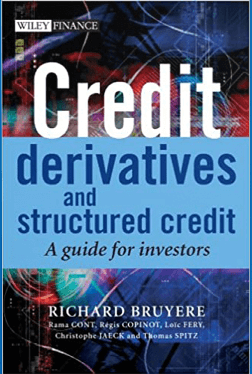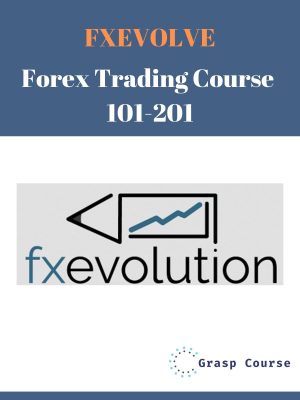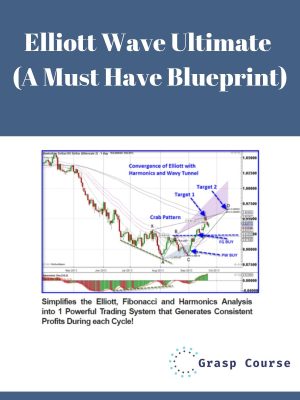Richard Bruyere – Credit Derivates & Structured Credit
$24.00
THOMAS SPITZ began his career in Socit Gnrale as a credit derivatives trader. I have joined Crdit Agricole Indosuez in 2001 as Head of Credit derivatives trading both on Europe and the United States.
Richard Bruyere – Credit Derivates & Structured CreditDescriptionOver the past decade, credit derivatives have emerged as the key financial innovation in global capital markets. At end 2004, the market size hit $6.4 billion (in notional amounts) from virtually nothing in 1995. This rise has been spurred by the imperative for banks to better manage their risks, not least credit risks, and the appetite shown by institutional investors and hedge funds for innovative, high yielding structured investment products. As a result, growth in collateralized debt obligations and other second-generation products, such as credit indices, is currently phenomenal. It is enabled by the standardization and increased liquidity in credit default swaps – the building block of the credit derivatives market. Written by market practitioners and specialists, this book covers the fundamentals of the credit derivatives and structured credit market, including in-depth product descriptions, analysis of real transactions, market overview, pricing models, banks business models. It is recommended reading for students in business schools and financial courses, academics, and professionals working in investment and asset management, banking, corporate treasury and the capital markets. Highlights include:
TABLE OF CONTENTSForeword. Introduction. 1 Credit Risk and the Emergence of Credit Derivatives. 1.1 Credit Risk. 1.1.1 Definition and Typology of Credit Risk. 1.1.2 Characteristics of Credit Risk. 1.1.3 The Importance of Credit Risk in Capital Markets. 1.2 Assessment and Measurements of Credit Risk. 1.2.1 Bank Capital Adequacy Standards (Basel I). 1.2.2 Credit Risk Analyzed by Rating Agencies. 1.2.3 Credit Risk Measured in the Financial Markets: Credit Spread. 1.3 Traditional Methods of Credit Risk Management and the Emergence of Credit Derivatives. 1.3.1 Traditional Methods for Managing Credit Risk (Issuer Risk). 1.3.2 Counterparty Risk Management in Derivatives Markets. 1.3.3 Emergence and Advantages of Credit Derivatives. 2 Typology of Credit Derivatives and their Main Applications. 2.1 Credit Default Swaps. 2.1.1 Description of Credit Default Swaps. 2.1.2 Comparison Between the CDS Market and the Cash Market: Basis. 2.1.3 Main Variations on CDSs. 2.2 Other Credit Derivatives. 2.2.1 Credit Spread Derivatives. 2.2.2 Synthetic Replication Products. 2.3 Main applications of Credit Derivatives. 2.3.1 Applications for Institutional Investors and Other Capital Market players. 2.3.2 Credit Derivative Applications in Bank Management. 2.3.3 Credit Derivative Applications for Corporates. 3 Second-Generation Credit Derivatives. 3.1 Basket Credit Default Swaps. 3.1.1 First-to-Default Credit Swaps. 3.1.2 Concrete Example. 3.1.3 Extension of the First-to-Default Principle: i to j-to-Default Products. 3.2 Hybrid Products. 3.2.1 Capital-Guaranteed/Protected Products. 3.2.2 Other Hybrid Products. 3.2.3 Concrete Example of a Transaction. 3.3 Credit Indices. 3.3.1 Introduction to Credit Indices. 3.3.2 Credit Index Mechanism, Pricing and Construction. 3.3.3 iTraxx Indices: a True Innovation to Benefit Investors. 4 Collateralized Debt Obligations. 4.1 Cash-Flow CDOs (Arbitrage CBOs and CLOs). 4.1.1 Origin of Arbitrage CBOs/CLOs. 4.1.2 Description of a CDO Structure. 4.1.3 Overview of the CBO/CLO Market and Recent Developments. 4.2 Balance Sheet-Driven CDOs. 4.2.1 Securitization of Bank Loans. 4.2.2 The Impact of Credit Derivatives: Synthetic CLOs. 4.2.3 Balance Sheet-Driven CDOs and Regulatory Arbitrage. 4.3 Arbitrage-Driven Synthetic CDOs. 4.3.1 The First Arbitrage-Driven Synthetic CDOs. 4.3.2 Actively Managed Arbitrage-Driven Synthetic CDOs. 4.3.3 On-Demand CDOs (Correlation Products). 5 The Credit Derivatives and Structured Credit Products Market. 5.1 Overview of the Market. 5.1.1 Main Stages in the Development of the Credit Derivatives Market. 5.1.2 Size, Growth and Structure of the Credit Derivatives Market. 5.1.3 Size, Growth and Structure of the CDO Market. 5.2 Main Players. Download immediately Richard Bruyere – Credit Derivates & Structured Credit 5.2.1 Banks. 5.2.2 Insurance, Reinsurance Companies and Financial Guarantors. 5.2.3 Hedge Funds and Traditional Asset Managers. 5.2.4 Corporates. 5.3 At the Heart of the Market: The Investment Banks. 5.3.1 Position of the Investment Banks in the Credit Derivatives Market. 5.3.2 Position of the Investment Banks in the CDO Market. 5.3.3 Functions and Organization of Investment Banks. 6 Pricing Models for Credit Derivatives. 6.1 Structural Models. 6.1.1 The Black–Scholes Option Pricing Model. 6.1.2 Merton’s Structural Model of Default Risk (1976). 6.1.3 Limitations and Extensions of the Merton Model (1976). 6.1.4 Pricing and Hedging Credit Derivatives in Structural Models. 6.2 Reduced-Form Models. 6.2.1 Hazard Rate and Credit Spreads. 6.2.2 Pricing and Hedging of Credit Derivatives in Reduced-Form Models. 6.2.3 Accounting for the Volatility of Credit Spreads. 6.2.4 Accounting for Interest Rate Risk. 6.3 Pricing Models for Multi-Name Credit Derivatives. 6.3.1 Correlation, Dependence and Copulas. 6.3.2 The Gaussian Copula Model. 6.3.3 Multi-Asset Structural Models. 6.3.4 Dependent Defaults in Reduced-Form Models. 6.4 Discussion. 6.4.1 Comparing Structural and Reduced-Form Modeling Approaches. 6.4.2 Complex Models, Sparse Data Sets. 6.4.3 Stand-alone Pricing Versus Marginal Pricing. 7 The Impact of the Development in Credit Derivatives. 7.1 The Impact of the Growth in Credit Derivatives on Banking Institutions. 7.1.1 Far-Reaching Changes in the Capital Markets. 7.1.2 An Economic Approach to Credit Risk Management. 7.1.3 Overview of the Banks of the Twenty-First Century: the Effect of Credit Derivatives on Banks’ Strategy, Organization and Culture. 7.2 Credit Derivatives and Financial Regulations. 7.2.1 Credit Derivatives and the New Basel II Regulations. 7.2.2 Credit Derivatives and the Instability of the Financial System. 7.2.3 A More Rounded Picture. 7.3 Credit Derivatives: A Financial Revolution? 7.3.1 Introduction to Particle Finance Theory. 7.3.2 Implications of ‘Particle Finance Theory’ for the Capital Markets. 7.3.3 An Innovation that Heralds Others. Conclusion. References. Further Reading. Index. About the AuthorRICHARD BRUYERE, a partner of Finance Concepts (capital markets and risk management consulting), is a former credit derivatives professional with experience in marketing, trading and structuring credit derivatives with SG and Credit Suisse First Boston. He is the author of Produits drivs de crdit (Economical: 1998, 2004). RAMA CONT is a research scientist at Center de Mathématiques Appliques, Ecole Polytechnique (France) and founding partner of Finance Concepts . He is the author of several research articles in quantitative finance and co-author of Financial modeling with jump processes (CRC Press, 2003) and Produits drivs de crdit (Economica: 2004). RGIS COPINOT is a Managing Director in Socite Gnrales Credit trading department specialist in non-investment grade credits. He has worked on derivatives products since 1992 in the London markets first in the field of Commodities Options (1992) later in Interest Rates Options (1994) and since 1998 in Credit Derivatives. Rgis Copinot is graduated from Ecole Centrale Paris. He is a co-author of Produits drivs de crdit (Economica: 2004). LOC FERY is managing director in the Capital Markets division of Calyon. He is in charge of the global Structured Credit & CDO product-line, which includes correlation trading, as well as Cash and Synthetic CDO structuring. Loc Fery is graduated from HEC (Paris). CHRISTOPHE JAECK joined Socit Gnrale credit derivatives department in 1998. In charge of structured operations on balance sheet management (synthetic CLOs) until 2001, he is now Head of synthetic CDOs activity development in Europe. Christophe Jaeck is a graduate from ENSAE. THOMAS SPITZ began his career in Socit Gnrale as a credit derivatives trader. I have joined Crdit Agricole Indosuez in 2001 as Head of Credit derivatives trading both on Europe and the United States. Since 2004, in Calyon, he is the Head of Trading and Risk Management team for the Structured Credit, Deivatives & CDO Group. Thomas Spitz is a graduate from ENSAE. |
Q & A
Ask a question
Your question will be answered by a store representative or other customers.
Thank you for the question!
Your question has been received and will be answered soon. Please do not submit the same question again.
Error
An error occurred when saving your question. Please report it to the website administrator. Additional information:
Add an answer
Thank you for the answer!
Your answer has been received and will be published soon. Please do not submit the same answer again.
Error
An error occurred when saving your answer. Please report it to the website administrator. Additional information:
Related products
Stock Forex Options - Trading
Stock Forex Options - Trading
Stock Forex Options - Trading
Stock Forex Options - Trading
Stock Forex Options - Trading
Stock Forex Options - Trading
Stock Forex Options - Trading
Stock Forex Options - Trading
Elliott Wave Ultimate (A Must Have Blueprint For Professional Trading Success)













Reviews
There are no reviews yet